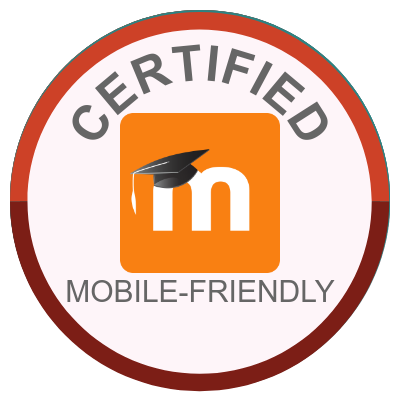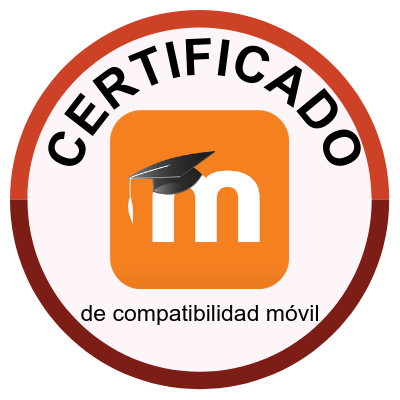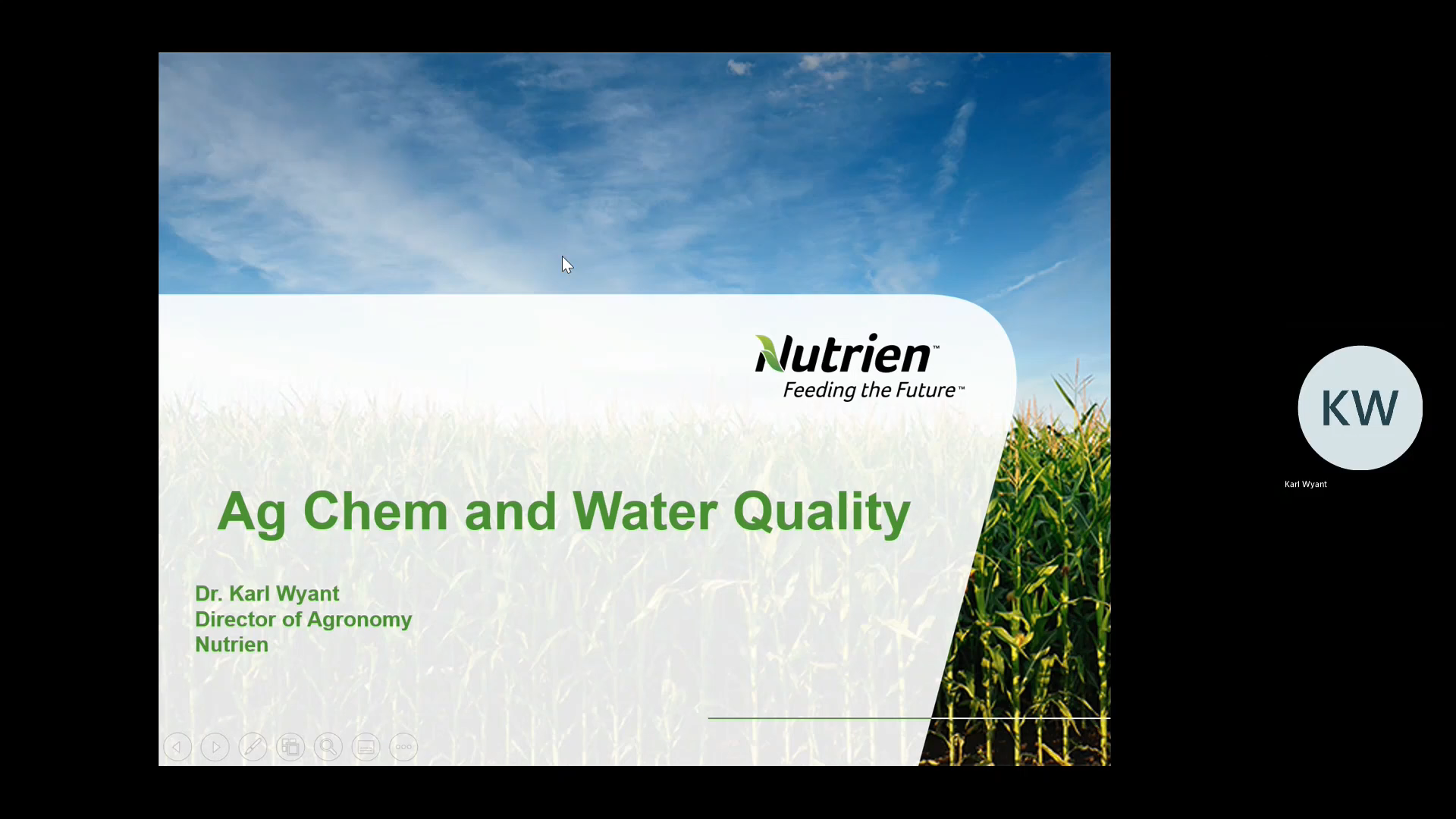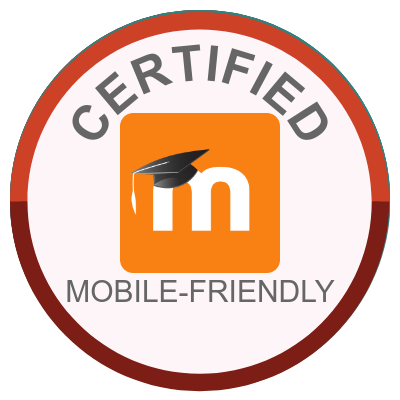Extension Foundation Online Campus
Search results: 541
2025 Southwest Ag Summit
Course Name: Lab to Field: Current Plant Pathology Research Efforts to Combat Plant Disease
Module 1: Area-Wide Population Dynamics of A. flavus str AF36 in Tree Nut Cropping Systems | Growth & Competition Between Biocontrol & Aflatoxin-Producing Genotypes of Asperguillus flavus in Soil
Dakota Salyer, University of Arizona | Ally Dalaya, University of Arizona
Module 2: Influence of Alfatoxin Biocontrol on Fumonisin Contamination in Maize | Diagnostic, Management & Field Trails on Late Blight of Celery
Sallu Nepal, University of Arizona | Bindu Poudel-Ward, University of Arizona
Module 3: RNAi: An Alternative to the Control of Plant Diseases
Johan Murcia, University of Arizona
Course Number: CA# DPR-1140-25, 1.5 CEU's (Other), AZDA # 25666, 1.5 CEU's, CCA # SS 59888, 1.5 CEU's (IPM)
CEU Credits: This course is accredited by the California Department of Pesticide Regulation, Arizona Department of Agriculture and Certified Crop Adviser.The course contains video, requiring a computer that can play audio and video.
Contact and technical support: Robert Masson, masson@arizona.edu.
The course contains video, requiring a computer that can play audio and video.
Contact and technical support: Robert Masson, masson@arizona.edu.
- Teacher: Don Dinwiddie
- Teacher: Robert Masson
2025 Southwest Ag Summit
Course Name: Exploring Eco-Efficiency through Use of Predator Thresholds and Proactive Resistance Management in Cotton.
Module 1: Eco-Efficiency Optimizes Production and Environmental Impact. Time: 21:24
Dr. Peter Ellsworth, University of Arizona
Module 2: Arizona Whitefly History, Introduction to Predator Thresholds and Supporting Inaction. Time: 39:44
Dr. Peter Ellsworth, University of Arizona
Course Number: CA# DPR-1138-25, 1.0 CEU's (Other), AZDA # 25667, 1.0 CEU's, CCA # SS 59890, 1.0 CEU's (IPM)
CEU Credits: This course is accredited by the California Department of Pesticide Regulation, Arizona Department of Agriculture and Certified Crop Adviser.Course availability will be through the end of the year and will be removed December 31st 2025.
The course contains video, requiring a computer that can play audio and video.
Contact and technical support: Robert Masson, masson@arizona.edu.
- Teacher: Don Dinwiddie
- Teacher: Robert Masson
2025 Southwest Ag Summit
Course Name: Vegetable IPM
Eric Peterson, Azzule
Module 2: The Emerging Viruses in Cucurbits Working Group: Improving Cucurbit Virus Management in the US through Stakeholder Education, Time: 26:41William Wintermantel, USDA-ARS
Module 3: Onion Downy Mildew Under Low Desert Conditions, Winter 2024, Time: 17:36
Ana Pastrana, University of California
Module 4: Update on Organic Insecticide Trials Targeting Vegetable Insect Pest, Time 28:45Wilfrid Calvin, University of Arizona
Course Number: CA# DPR-0673-25, 2.0 CEU's (Other), AZDA # 25669, 2.0 CEU's, CCA # SS 59857, 2.0 CEU's (IPM)
CEU Credits: This course is accredited by the California Department of Pesticide Regulation, Arizona Department of Agriculture and Certified Crop Adviser.Course availability will be through the end of the year and will be removed December 31st 2025.
The course contains video, requiring a computer that can play audio and video.
Contact and technical support: Robert Masson, masson@arizona.edu.
- Teacher: Don Dinwiddie
- Teacher: Robert Masson
Course Overview
The California 4-H New Volunteer Course is a necessary resource for adults starting their first year or coming back after a break of a year or more. In this course, you will learn important parts of 4-H service, like an orientation, CANRA guidelines, and the 4-H Thriving Model for Positive Youth Development. You'll also learn about 2-Deep Supervision and the 4-H program's commitment to creating a safe and welcoming environment for all youth, and how you can help achieve that vision.
Length
1 hour, 35 minutes (Can be completed over multiple sessions)
- 4-H Orientation - 40 minutes
- CANRA for Volunteers - 30 minutes
- 4-H Thriving Model of PYD - 15 minutes
- 2-Deep Supervision Policy - 5 minutes
- University of California 4-H Core Values - 5 minutes
Who Should Attend
California Adult Volunteers who are starting their first year of service or are returning after a break of a year or more.
- Teacher: Zeva Cho
- Teacher: CA 4-H eXtension Tech Support
- Teacher: Scott Mautte
- Teacher: Gemma Miner

Course Overview
The California 4-H Returning Volunteer Course gives you important updates on policies and best practices to keep you up to date. It focuses on CANRA guidelines and the 4-H Thriving Model for Positive Youth Development. You'll also learn about the 4-H program's commitment to creating a safe and welcoming environment for all youth, and how you can help achieve that vision.
Length
55 Minutes (Can be completed over multiple sessions)
- CANRA for Volunteers - 30 minutes
- 4-H Thriving Model of PYD - 15 minutes
- University of California 4-H Core Values - 5 minutes
Who Should Attend
California Adult Volunteers who are starting their second year of service or more with no breaks in service.
- Teacher: Zeva Cho
- Teacher: CA 4-H eXtension Tech Support
- Teacher: Scott Mautte
- Teacher: Gemma Miner

Descripción General del Curso
El curso para voluntarios que regresan del programa 4-H de California le ofrece actualizaciones importantes sobre políticas y mejores prácticas para mantenerlo al día. Se enfoca en los lineamientos de CANRA y en el Modelo 4-H para el Desarrollo Positivo de la Juventud (4-H Thriving Model for Positive Youth Development). También aprenderá sobre el compromiso del programa 4-H de crear un ambiente seguro y acogedor para todos los jóvenes, y cómo usted puede ayudar a lograr esa visión.
Duración
50 minutos (puede completarse en varias sesiones)
- CANRA para voluntarios - 30 minutos
- Modelo próspero de PYD de 4-H - 15 minutos
- Valores fundamentales de 4-H de la Universidad de California - 5 minutos
Quién Debe Asistir
Voluntarios adultos de California que inician su segundo año de servicio o más sin interrupciones en el servicio.
- Teacher: Zeva Cho
- Teacher: CA 4-H eXtension Tech Support
- Teacher: Scott Mautte
- Teacher: Gemma Miner

Descripción General del Curso
El Curso para Nuevos Voluntarios de 4-H de California es un recurso necesario para los adultos que comienzan su primer año o que regresan después de una pausa de un año o más. En este curso, usted aprenderá partes importantes del servicio 4-H, como una orientación, los lineamientos de CANRA y el Modelo 4-H Thriving para el Desarrollo Positivo de la Juventud. También aprenderá sobre la Supervisión 2-Deep y el compromiso del programa 4-H de crear un ambiente seguro y acogedor para todos los jóvenes, y cómo usted puede ayudar a lograr esa visión.
Duración
1 hora, 35 minutos (Puede completarse en varias sesiones)
- Orientación 4-H - 40 minutos
- CANRA para voluntarios - 30 minutos
- 4-H Modelo próspero de PYD - 15 minutos
- 2-Política de Supervisión Profunda - 5 minutos
- Visión e Impacto de California 4-H - 5 minutos
Quién debe asistir
Voluntarios adultos de California que comienzan su primer año de servicio o regresan después de una pausa de un año o más.
- Teacher: Zeva Cho
- Teacher: CA 4-H eXtension Tech Support
- Teacher: Scott Mautte
- Teacher: Gemma Miner

This is the basic training class for the 2026 UC Master Gardener Program trainees in Sonoma County. This course is internal to the Sonoma Master Gardener program and is not open to the public.
- Teacher: Therese Arsenault
- Teacher: Mimi Enright
- Teacher: Judy Hatfield
- Teacher: Carla Tarazi
- Teacher: Suzi Yarian
Course Name: AB001-Record Keeping and Cash Flows
This class starts with the basics of building a financial plan, which is keeping track of your income and expenses. This is where we first introduce the financial self-assessment. Students will fill out the assessment to help them gain a better understanding of their own financial well-being, and hopefully give them motivation to go through the entire money management modules. The assessment is retaken in module 7, which allows students to see their progression. 1. Record Keeping 2. Hand versus. Computer Records 3. 5 Basic Steps to Record Keeping 4. Cash Flow Statements 5. Types of Expenses By the end of this class students should have a clear method for how they want to track their expenses and build a cash flow budget. Questions? Email Trent Teegerstrom at tteegers@ag.arizona.edu.
The course contains video so it requires a computer that can play audio and video.
Contact and technical support: Robert Masson, masson@arizona.edu.
- Teacher: Jody Dean
- Teacher: Don Dinwiddie
- Teacher: Robert Masson
Course Name: AB002-Loans and Credit Cards
At this point, this class does not revisit record keeping, but students should remember to keep track of their cash flows, because they will be referring to them in later modules. AB002 addresses interest rates on loans and credit cards. We also introduce the MyFi Assist app, it is a free financial assistant app. MyFi is used extensively through the money management modules. 1. Components of an Interest Rate 2. Credit Score versus Interest Rate 3. MyFi Assist 4. Paying Credit Cards 5. Paying for House Loans 6. Take-Home Message 7. Money Management Module Review 8. Reminder to Keep Track of your Budgeting Exercise The objective of module 2 is to understand the effects of interest rates, as well as managing loans and credit card usage. Questions? Contact Trent Teegerstrom at tteegers@ag.arizona.edu
The course contains video so it requires a computer that can play audio and video.
Contact and technical support: Robert Masson, masson@arizona.edu.
- Teacher: Jody Dean
- Teacher: Don Dinwiddie
- Teacher: Robert Masson
Course Name: AB003-Applying for a Loan-the 5 C's of Borrowing
This class does not revisit the record keeping assignment, but students should remember to keep track of their cash flows. Also try to answer any questions that may come up while they are trying to compile their budget. Cash flows and budgets will be referred to in later modules. This class addresses the factors that lenders take into account when approving loan applications. Understanding what a lender is looking for in a borrower can help potential borrowers increase their chances of being approved for a loan, or obtaining a better interest rate. 1. Qualities Banks and Lenders Look for in a Borrower 2. Sources of Money 3. Terms and Conditions of a Loan 4. Personal Information Required for Loan Application 5. 5 C’s of Borrowing 6. Basis of Loan Approval Students should keep track of their cash flows and budgets; if they have an accurate budget they may find that applying for a loan is not necessary. Instead, they can cut frivolous expenses and save to buy the things they want. If applying for a loan is necessary, they already have an idea of where they stand in the eyes of a lender. Questions? Email Trent Teegerstrom at tteegers@ag.arizona.edu.- Teacher: Jody Dean
- Teacher: Don Dinwiddie
- Teacher: Robert Masson
Course Name: AB004-Credit Reports and Scores
The course contains video so it requires a computer that can play audio and video.
- Teacher: Jody Dean
- Teacher: Don Dinwiddie
- Teacher: Robert Masson
Course Name: AB005-Savings and Budgeting
This class introduces long- and short-term savings plans and goals as well as how to define each of these. This class also uses the MyFi Assist app to help students create a savings plan. Going over the cash flow and budget assignment will help students introduce savings into their budgets if they have not done so already. Their savings plans should include an emergency fund, a long-term goal like retirement, and at least one short-term goal. If students’ budgets seem to be stretched, they can identify areas where they can spend less or find areas where they can earn extra income. 1. Savings Goals 2. Good versus Bad Savings Goals 3. Risk and Rates over Time 4. Where Do I Save my Money? 5. Budget Check-Up and Questions 6. Finding Ways to Save 7. Inflation Questions? Email Trent Teegerstrom at tteegers@ag.arizona.edu.The course contains video so it requires a computer that can play audio and video.
- Teacher: Don Dinwiddie
- Teacher: Robert Masson
Course Name: AB006-Personal Finances
This course is an in-class review of the long-term cash flow and budgeting assignment. A discussion will cover how students developed their cash flows. Did they run into any obstacles? Did they figure out where to put odd expenditures? Are they having problems incorporating savings into their budget? Is their budget accurate? This module helps students understand that they can still reach their goals while meeting their financial needs. 1. Students’ Cash Flow 2. Trade-Offs 3. Wants verus Needs 4. Unexpected Expenses 5. Hold Yourself Accountable 6. Adjust Your Expenditures Questions? Email Trent Teegerstrom at tteegers@ag.arizona.edu.The course contains video so it requires a computer that can play audio and video.
- Teacher: Jody Dean
- Teacher: Don Dinwiddie
- Teacher: Robert Masson
Course Name: AB007-Creating Your Financial Plan
The focus of this course is to help students analyze their budgeting assignments. Students will identify their goals and insert them into their budgets. This is also a point to reiterate trade-offs and wants versus needs (refer to module 6) to help keep a balanced working budget. Included in this module is the financial self-assessment worksheet that was initially provided in module 1 in addition to a budget review questionnaire. Students fill out the financial self-assessment worksheet. The self-assessment worksheet will give them a benchmark for their progress, as well as a direction for what they need to be working on. 1. Length of time to maintain records 2. Review progress on exercises 3. Creating your plan 4. Assessment of current situation 5. Analyze your assessment 6. Prioritize your goals 7. Develop a plan to achieve your goals 8. Review your plan 9. Monitor and modify your financial plan Questions? Email Trent Teegerstrom at tteegers@ag.arizona.edu.The course contains video so it requires a computer that can play audio and video.
- Teacher: Jody Dean
- Teacher: Don Dinwiddie
- Teacher: Robert Masson
Course Name: AB009-Early Development of a new Idea
This course uses a mini assessment tool to help a prospective entrepreneur determine whether they are financially and personally capable of starting a new venture. Once the mini assessment is complete, another set of questions goes into more detail about the product, cost structure, and market. The more detail a prospective entrepreneur can put into the answers, the better prepared to start a business they are. The business planning questions are meant to give participants a comprehensive look at the steps to starting a business. 1. Am I ready to start a business? 2. Introduction to finances and budgeting 3. Developing a market strategy 4. Can I make money? Questions? Contact Trent Teegerstrom at tteegers@ag.arizona.edu.The course contains video so it requires a computer that can play audio and video.
- Teacher: Jody Dean
- Teacher: Don Dinwiddie
- Teacher: Robert Masson
Course Name: AB010-Market Assessment-Estimating Market Size and Price
This course is a comprehensive look at defining a customer base, estimating the size of the market, and determining a price point. This class uses worksheets to guide participants through the process of determining market size and price points for their products. Each worksheet covers a different topic, including customer segmentation, potential volume, competition, pricing strategy, and promotion strategy. Additional resources are listed in the PowerPoint presentation to help participants find information on potential customer demographics, average food consumption, and pricing. Completing a market assessment is an important and cost-effective step in starting a business: Investing time into completing one now can save money in the future. 1. Market assessment process 2. Estimating product price 3. Competitive analysis 4. External factors in pricing Questions? Contact Trent Teegerstrom at tteegers@ag.arizona.edu.The course contains video so it requires a computer that can play audio and video.
- Teacher: Jody Dean
- Teacher: Don Dinwiddie
- Teacher: Robert Masson
Course Name: AB011-Introduction to Budgets and Financial Statements
This course is meant to be an introduction to (not a comprehensive understanding of) different types of financial statements and budgets (budgets will be covered in greater detail in AB012). Understanding financial statements can benefit business owners by helping them determine whether or not the business or enterprise is performing as expected. When discussing budgets, help participants understand that budgets are a way of managing resources to maximize profits. The budgeting worksheets used in this module are meant to guide participants through the steps of building their own enterprise budgets and incorporating all production costs. Future entrepreneurs should be as accurate as possible with their revenue and expenses, and understand that it is easier to make adjustments on paper now, rather than when their businesses are operational. The cash flow worksheets help visualize when expenses are incurred and when revenue is generated. The excel version of the worksheet can be a helpful tool to use as an in-class example, and the long-term cash flow worksheet can help your participants compare different cash flow scenarios and see whether they will run a deficit or a surplus. 1. Types of budgets 2. Cash flows 3. Types of financial statements 4. Important ratios 5. Why it is important to keep records Questions? Contact Trent Teegerstrom at tteegers@ag.arizona.edu.The course contains video so it requires a computer that can play audio and video.
- Teacher: Jody Dean
- Teacher: Don Dinwiddie
- Teacher: Robert Masson
Course Name: AB012-Financial Analysis
This course builds on the previous module’s financial overview of budgets and statements. Using examples, this class explains in greater detail how to create and analyze a partial budget and an enterprise budget using tools like sensitivity analysis and break-even analyses. MyFi Assist is also re-introduced. This tool can be used to find monthly payments to be used in a partial budget or an enterprise budget, which will allow participants to find break-even points or complete sensitivity analyses. Participants should understand that all financial options should be considered on paper to determine the outcomes that are good, bad, and ugly. Once these are known, it becomes possible to plan for future financial success. 1. Sensitivity analysis 2. Break-even analysis 3. Partial budgeting Questions? Email Trent Teegerstrom at tteegers@ag.arizona.edu.The course contains video so it requires a computer that can play audio and video.
- Teacher: Jody Dean
- Teacher: Don Dinwiddie
- Teacher: Robert Masson
Course Name: AB013-Introduction to American Indian Land Tenure Act
This course covers first how American Indian reservations were established, beginning with the Doctrine of Discovery, to Manifest Destiny and the creation of the Office of Indian Affairs, through the evolution of federal policies that have created the reservations that we know today. The second section of the module covers the difficulties of navigating the uniqueness of each reservation. How the reservation was established and whether or not it was impacted by the Dawes Act of 1887 will determine land tenure on a given reservation. American Indian trust land is held in a "trust status" by the US government; in the case of allotments, fractionation occurs, resulting in hundreds of owners on a single parcel of land. Water rights are also brought up as a contentious issue on reservations, and the use of Indian trust land as collateral is difficult. This class shines light on the laws and legislation that have created social economic hardship for reservations and Native Americans. 1. Federal policy eras 2. Tribal governance and the federal relationship 3. Tribal sovereignty 4. General Allotment Act, 1887 5. Fractionation 6. Trust to fee conversion 7. Water rights on reservations Questions? Email Trent Teegerstrom at tteegers@ag.arizona.edu.The course contains video so it requires a computer that can play audio and video.
- Teacher: Jody Dean
- Teacher: Don Dinwiddie
- Teacher: Robert Masson
Course Name: AB014-Ownership, Liability, and Risk
This course covers different business structures and the advantages and disadvantages of each. For example, a sole proprietorship (the most common type of business structure) is owned and operated by a single individual. Sole proprietorship has the most flexibility of the business structures, but this flexibility comes with a price—unlimited liability. This class also covers risk and risk management. Areas of risk can include production, financial, price, institutional, or human. This module will teach participants how to evaluate the level of risk in their businesses or farms and create plans for corrective measures to avoid or minimize risk. Identifying and managing risk in the early stages of the planning phase is important. 1. Business structures and the pros and cons of each 2. Risk management 3. Tools for managing risk 4. Analyzing on farm risk 5. Food safety issues 6. Disaster preparedness Questions? Email Trent Teegerstrom at tteegers@ag.arizona.edu.
The course contains video so it requires a computer that can play audio and video.
- Teacher: Jody Dean
- Teacher: Don Dinwiddie
- Teacher: Robert Masson
Course Name: AB015-Tax Issues for Farmers and Ranchers
This course introduces common tax filing issues for owners of small businesses or farms. The information presented in this module comes from the Ruraltax.org website, which contains a variety of small farm tax examples that could be used to supplement the presentation. This module briefly touches of individual tribal tax and deferred tax issues. This module is not meant to be a comprehensive look at taxes and tax issues; rather, it is meant to help participants become more aware of the types of tax issues that exist. 1. Basic tax forms 2. Schedule F 3. Self-employment taxes 4. Hobby loss rules 5. Form 1099 6. Individual tribal taxes 7. Section 179 8. Depreciation and estate taxes Questions? Contact Trent Teegerstrom at tteegers@ag.arizona.edu.The course contains video so it requires a computer that can play audio and video.
- Teacher: Jody Dean
- Teacher: Don Dinwiddie
- Teacher: Robert Masson

- Teacher: Cathryn Peshlakai
- Teacher: Lisa Whipple
- Teacher: Sarah Wright

Course Overview:
Dr. Karl Wyant, Director of Agronomy with Nutrien will talk about how spray water quality can negatively impact Ag chemical performance. He will also explain to us how to use a water quality sample to predict future interactions or explain current results, when and how to sample spray water and how to understand a water quality sample report. Dr. Wyant will break down a spray water quality report and explain the effects it has on the chemicals it is mixed with. This course is designed for Ag Chem professionals and Pest Control Advisors. This course will be accredited by the Certified Crop Adviser Program for 1 CEU credit.
Course Name: Ag Chem and Water Quality
Presented by: Dr. Karl Wyant
Course Number: CCA #SS 56944
CEU Credits: This course is accredited by the Certified Crop Adviser program, (1.0 CEU NM).Course will be automatically removed from circulation December 31st, 2024.
The course contains video so it requires a computer that can play audio and video.
Contact and technical support: Robert Masson, masson@arizona.edu.
- Teacher: Don Dinwiddie
- Teacher: Robert Masson

Pesticide product labeling is the
main method of communication between a pesticide manufacturer and pesticide
users. The information printed on or attached to the pesticide container is the
label. Labeling includes the label plus all other information you
receive from the manufacturer about the product when you buy it.
Credits for this course are currently available for New Hampshire, Maine, Vermont, Massachusetts, Connecticut, Rhode Island and Pennsylvania.
For more information or to enroll please contact Rachel Maccini, Pesticide Safety Education Program Coordinator, University of New Hampshire.
The fee for this course is $40. To purchase and enroll in it, select the following button:
- Teacher: Faye Cragin
- Teacher: Rachel Maccini

This course is designed to remind applicators to the severity of pesticide poisoning and how this poisoning depends on the pesticide's chemical makeup and formulation, its path into the body, the amount that enters the body, and the length of exposure. Wearing PPE can greatly reduce the potential for dermal, inhalation, eye, and oral exposure, and thereby significantly reducing the chances of a pesticide poisoning, but it does not necessarily eliminate it.
Credits for this course are currently available for New Hampshire, Maine, Vermont, Massachusetts, Connecticut, Rhode Island and Pennsylvania.
- Teacher: Faye Cragin
- Teacher: Rachel Maccini

This class will help guide you in identifying dangerous situations, taking preventative measures to minimize risks, and responding appropriately when an accident occurs. Preparation is key to safeguarding yourself and your employees.
Credits for this course are currently available for New Hampshire, Maine, Vermont, Massachusetts, Connecticut, Rhode Island and Pennsylvania.
The fee for this course is $40. To purchase and enroll in the course, select the following button:
- Teacher: Faye Cragin
- Teacher: Rachel Maccini

Proper disposal of pesticides and pesticide containers is an important phase of pest management an improperly disposed product can be hazardous to people and the environment. READ THE PRODUCT LABEL for specific disposal information.
Credits for this course are currently available for New Hampshire, Maine, Vermont, Massachusetts, Connecticut, Rhode Island and Pennsylvania.
The fee for this course is $40. To purchase and enroll in the course, click the button below:
- Teacher: Faye Cragin
- Teacher: Rachel Maccini

This course was designed as an interactive course. It will require you to read through a variety of different pesticide labels and choose the best product to handle a situation provided to you. You will be able to choose any product provided, however when you make a choice that is not the best choice you will be faced with some consequences. It will be important that you read the labels thoroughly and choose the best product.
For more information, please contact Rachel Maccini
- Teacher: Rachel Maccini

Credits for this course are currently available for New Hampshire, Maine, Vermont, Massachusetts, Connecticut, Rhode Island and Pennsylvania.
- Teacher: Faye Cragin
- Teacher: Rachel Maccini



